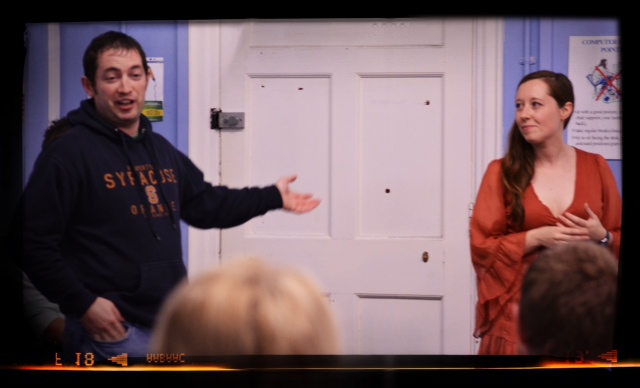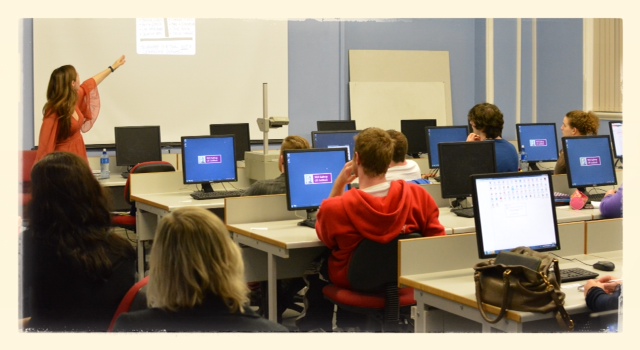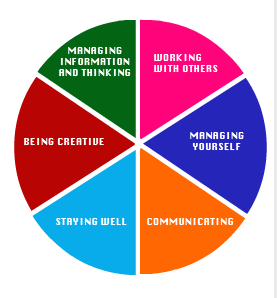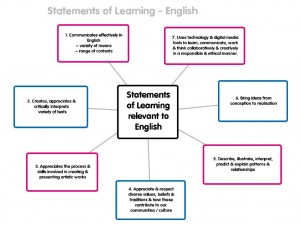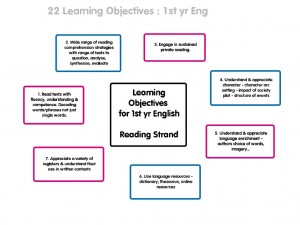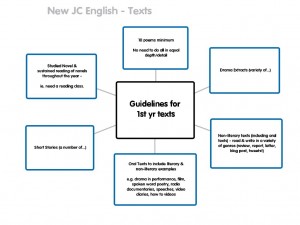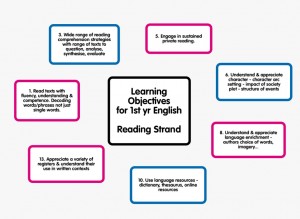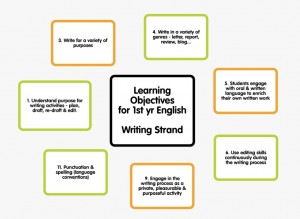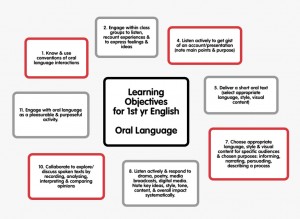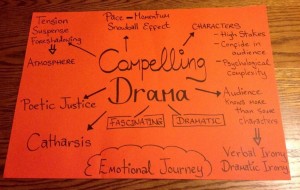I’m a bit addicted to CPD but I wasn’t always! For the first seven years of my teaching career I did that clichéd thing of treating my classroom as my kingdom. I only ever really learnt about teaching practices from immediate colleagues who taught the same subject as me in the same physical building as me.
I went to the odd event in my local education centre, but it was usually in the evening after work, and I was usually wrecked. Even when it was good, my attention was never fully in the room, as part of my brain was always pre-occupied by what I’d still need to do when I got home for tomorrow’s classes and the nagging guilt of the copies that hadn’t been corrected but that would NEED to be corrected. Soon. Somehow. These were the days I’d skip dinner, chowing down a bag of crisps and maybe a few biscuits, then staying up until midnight (or later) to complete what I needed to have prepared for the next day. The in-service that was provided during school days I refused to go to, unless it was compulsory, because I didn’t want to miss valuable class contact time. It just always felt like we didn’t have enough time with our classes! It still feels like that now, but having my blog as online support for my students makes me feel less stressed about it all.
Occasionally we had utterly brilliant CPD. In the early days of the Croke Park hours, back when I was still teaching in St. Flannan’s College in Ennis, I’ll never forget the day Professor Tom Collins came all the way from Maynooth to speak to us. He blew our minds open with his passionate argument in favour of the messiness of learning. I emailed him to find out more and he kindly posted me a booklet of research examining the teaching of English in Irish Secondary Schools. It provided many flashes of inspiration and insight but I think back then I was still waiting for the CPD to come to my door. I didn’t seek it out, I wanted it handed to me on a plate, preferably during school time. I was the first one to roll my eyes if we had CPD that I considered a ‘waste of time’ and my attitude to up-skilling could be described at best as reluctant (‘I don’t really have time for this‘) and at worst surly (‘Oh for God’s sake, can we just get out of here?‘).
So what changed?
I started a blog and attended a conference.
The ICT in Education conference in Tipperary in May 2011 was my first experience of mixing with teachers from across all levels – primary, secondary and third level – and learning directly from them in nano-presentations of about 5 minutes each at my first ever CESI meet. The conference the next day made my brain fizz and melt and explode with the possibilities (you can read about that here).
Fast forward 3 years and I’ve been invited to keynote at the same ICT in Education conference this May and my brain cannot quite compute how I got here?!? I’m flattered, I’m overawed and I’m a little bit terrified, but don’t tell the organisers that or they might retract their offer 😉
Now, my CPD schedule looks very different. Every year, barring an unforeseen calamity, at an absolute minimum I attend the INOTE conference for teachers of English in October, the CESI conference for edtech beginners and enthusiasts in February, the ICT in Education conference in May and during the summer I’ll sign up for whatever I can that’ll keep the fires of learning burning. I attended a three day Digital Bootcamp in 2012, did a five day ADE institute in 2013 and am currently plotting and scheming what I can blag my way into in summer 2014!
And I love it! I’m not going so my CV will look good, I’m going because I love learning what other people are up to and seeing how I can steal their ideas and adapt them to my own classroom.
As an English teacher, I also now regard a trip to London to see some theatre at least once a year as crucial (again, this is a change from how I used to approach my teaching, which for a long time I thought was all about giving good notes!). This is not to see the plays that are on the curriculum, it’s to remind myself why I became an English teacher in the first place. The same goes for reading books (the shortlist for the Booker prize is always a priority) and blogs and poetry and really great journalism; the same goes for attending TEDxDublin. Remembering why you love your subject, why you want to communicate that love to others is a must. Yes, it’s challenging finding the time (but it’s also bloody enjoyable) and yes, sometimes kids in your class will look at you like you’re an alien from another dimension, but that’s ok. As long as the passion remains, that’s ok.
But perhaps most importantly of all, my very best CPD comes from the fact that every day I connect with educators nationally and globally via twitter to inform my teaching, to challenge my perceptions, to shake me out of my comfort zone, to share resources and to try – and believe me I often fail – to get better at what I do.
Yesterday at the CESI conference, I spoke to so many passionate teachers. The idea that there are swarms of teachers out there who never do anything beyond what’s absolutely compulsory is utterly untrue. There were lots and lots of teachers using their Saturday yesterday to debate, discuss and deliver better teaching (in fact educators had to choose between the CESI conference in Galway, an Education & Research conference in Limerick, a School Planners conference in Laois, an Educational Leadership Symposium in Maynooth, the IPPEA conference in Carlingford Adventure Centre, a TY co-ordinators meeting in Athlone, a Young Critics and Film event in Monaghan Garage Theatre and volunteering at CoderDojo clubs nationwide) but I also know that once upon a time I was so caught up in prep and corrections that I felt I didn’t have time to engage in CPD. Now I realise what a wonderful motivator it can be. Really great CPD is invaluable because it encourages you to stop doing the same thing the same way yet expecting a different result. On the flip side, really crap CPD is unforgivable because it discourages you from ever doing any CPD ever again!
I also got teased yesterday (I’m looking at you John Heeney!) for giving the powers that be / the JCT a hard time for not providing enough CPD for the introduction of the new Junior Cycle (I deserved that one – I have been fairly mouthy on this issue!) and a few minutes later I spoke to Ben Murray from the NCCA about ePortfolios and about the connections that have been established with the Arts Council, the Abbey, the National Association for Youth Drama and the Irish Film Institute to provide supplementary workshops (click here for the timetable) for English teachers. Yes, it means giving up a Saturday, but, frankly, so what? As educators, we need to love learning. If we don’t we’re in the wrong game. I know life can sometimes get in the way and the locations and dates might not suit everyone, but it’s no longer fair or accurate to claim there isn’t CPD available, even if does feel a tad rushed and last minute. So for the record, I’m no longer whinging about the lack of CPD – a change indeed!
Everyone at the conference was also given the opportunity to offer their two cents as to what priorities should be at the forefront for educators in the National Digital Strategy. You can add your own thoughts and read what other educators view as important here: http://padlet.com/wall/cesinds
So what next?
1. I need to see if I can make it to some of the Saturday workshops for English teachers.
Like all of us, I’ve got a lot on my plate at the moment but the feedback so far has been really positive. I’m following @JuniorCycleArts and @JCforTeachers on twitter to keep in the loop on this and apparently you just ring the education centres to book. I think some of the courses are booked out already so I’d better get my ass in gear!
2. I need to prepare my (first ever) keynote for ICTedu – eek!
However, scary and all as that seemed a week ago, a conversation with Simon Lewis on Friday night clarified a lot for me on this score, so thanks Simon. I went to bed, full of ideas (and red wine!) and typed like a mad yoke before I fell asleep so the ideas wouldn’t have disappeared when I woke up.
3. And, as usual, I need to go do some corrections!

